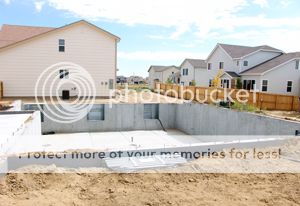
Houses, no matter their age, will shift and settle over time resulting in cracks. Cracks may appear in either finishes or structural components. Though they usually have no structural significance, it’s worth some detective work to help homeowners understand the difference between different types of foundation cracks. Here are some visual guidelines:
Shrinkage Cracks
Concrete shrinks as it cures, so a newly-poured concrete foundation may develop small vertical cracks. Known as shrinkage cracks, they are not structurally significant. Characteristics of shrinkage cracks include the following:
- The crack will be small and vertical, usually less than 1/8″ wide.
- The crack is in the foundation wall only and does not extend up through the structure.
- Shrinkage cracks usually occur in the middle third of the length of the foundation wall. If it’s located toward the end of the length of the foundation wall, it is probably not a shrinkage crack.
Settlement Cracks
Like shrinkage cracks, settlement cracks are vertical but they extend up through the structure. In block or brick, cracks may follow the mortar joints in a step pattern rather than vertical. Most settlement cracks are caused by short-term settlement. Ongoing settlement is uncommon but can cause structural problems over time. Here are some ways to get an idea of whether ongoing settlement is likely:
Crack size: Settlement cracks more than 1/4″ wide is more likely to indicate ongoing movement than smaller cracks.
Direction of movement: The edges of a typical settlement crack line up and fit together vertically, much like pieces of a puzzle. If the edges of the crack have shifted, or sheared, so that they no longer line up, the 1/4″ rule described above does not apply. This type of crack can be a significant structural concern.
Repaired and re-cracked: Unless it is a hairline crack, a settlement crack that was repaired and has re-cracked could also indicate ongoing movement and should be addressed.
Horizontal Cracks – Basement Foundation Wall
In homes with true basements, a horizontal crack in the foundation wall, below grade and running the full length of the basement is likely a sign of foundation failure. For a house with a full basement, the soil outside the foundation wall exerts a tremendous amount of pressure on the foundation wall. Occasionally, unanticipated additional loads exert pressure and cause horizontal cracking in the foundation wall. Do not wait to address this potential issue as it could cause much greater problems down the line, including structural failure.
If you, or someone you know is considering Buying or Selling a Home in Columbus, Ohio please contact The Opland Group. We offer professional real estate advice and look forward to helping you achieve your real estate goals!
The Opland Group Specializes in Real Estate Sales, Luxury Home Sales, Short Sales in; Bexley 43209 Columbus 43201 43206 43214 43215 Delaware 43015 Dublin 43016 43017 Gahanna 43219 43230 Grandview Heights 43212 Hilliard 43026 Lewis Center 43035 New Albany 43054 Pickerington Powell 43065 Upper Arlington 43220 43221 Westerville 43081 43082 Worthington 43235



